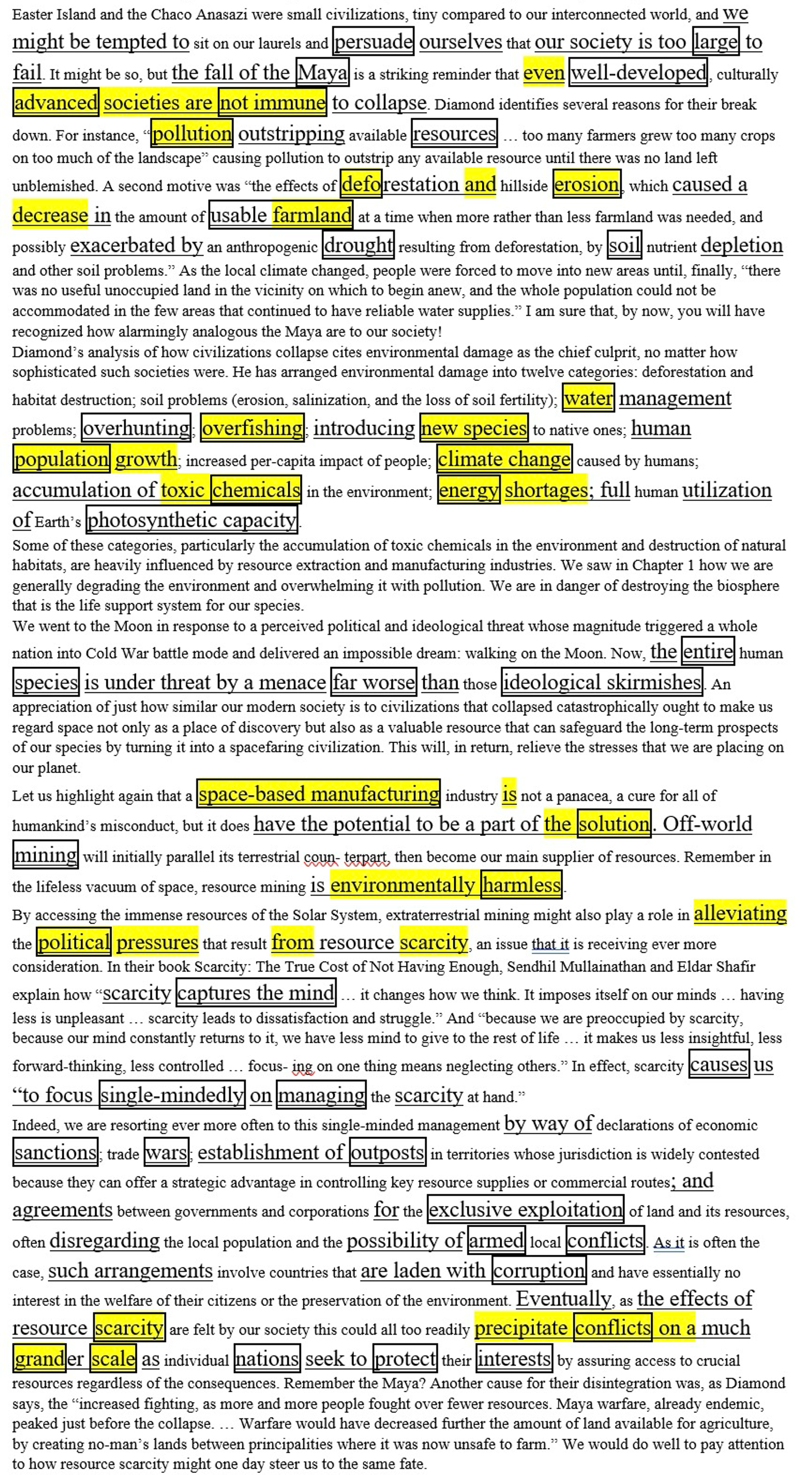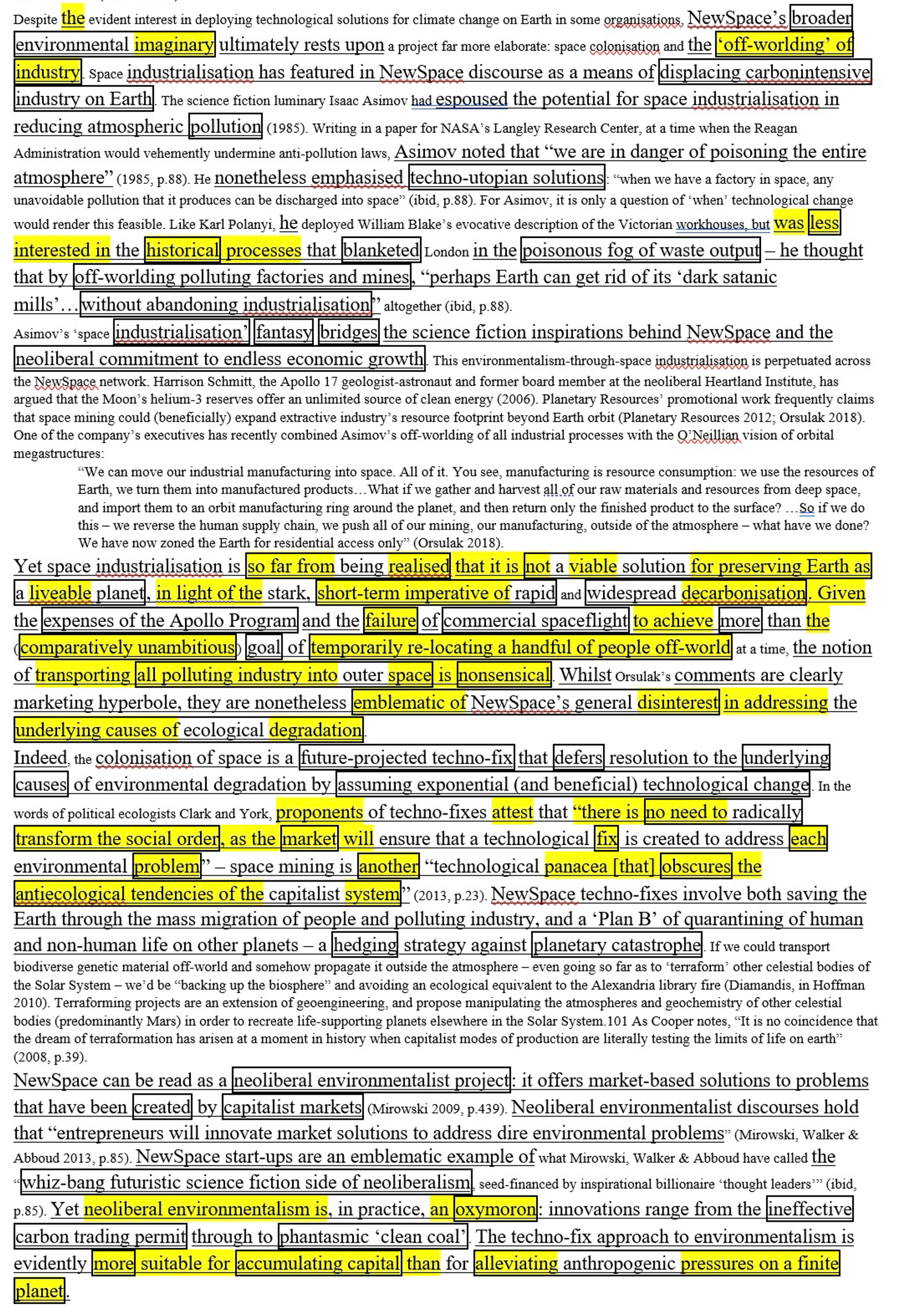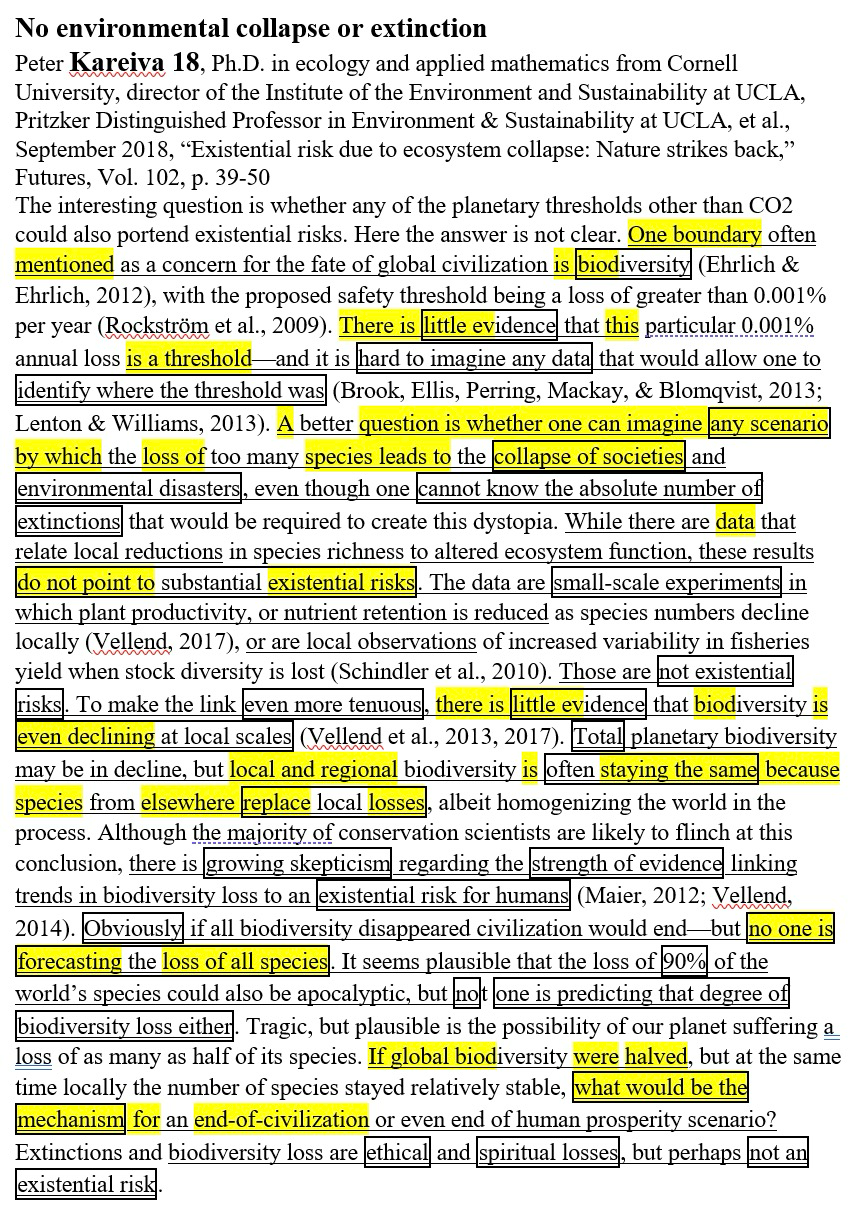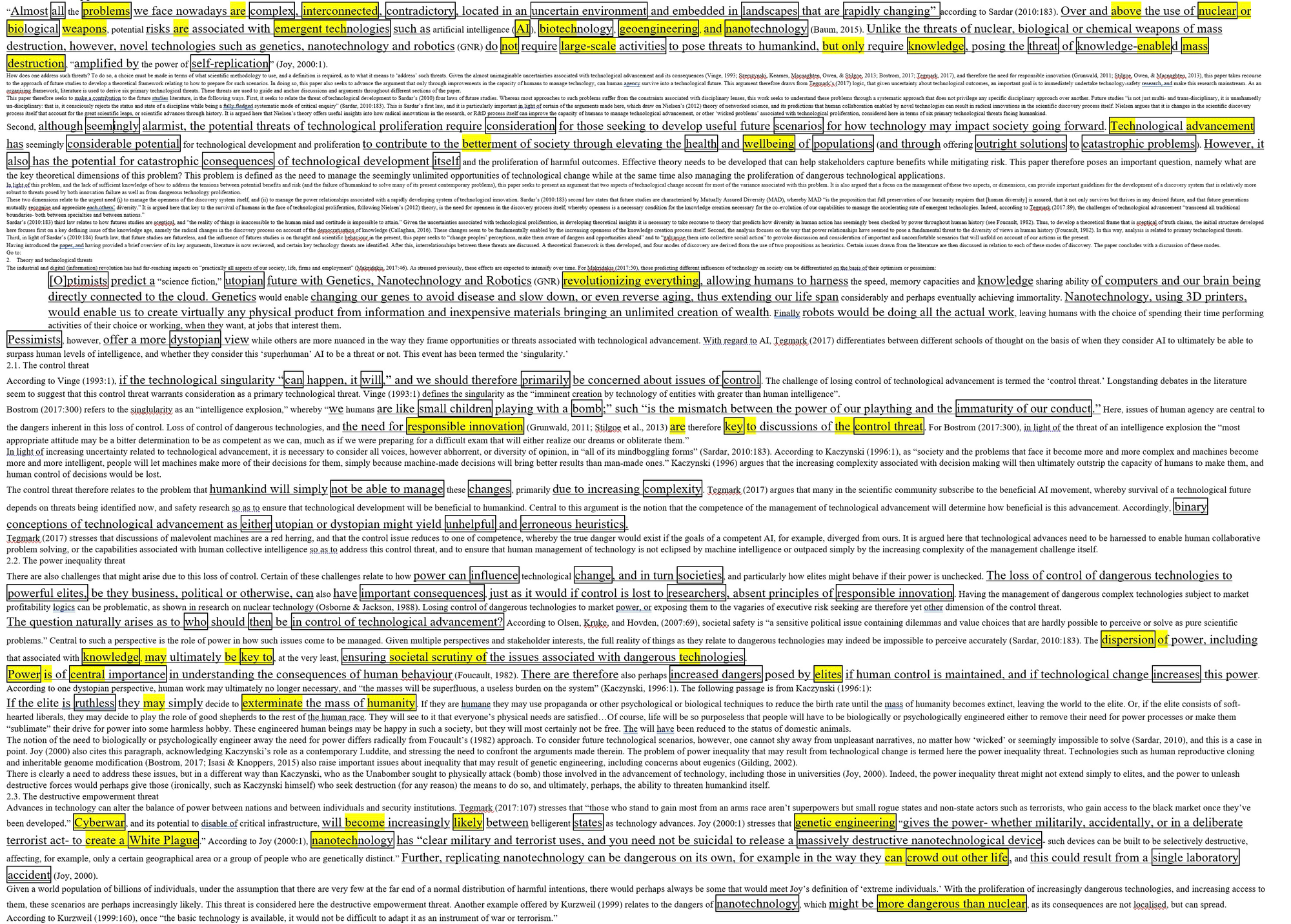The Mailbox—#1
Responding to submissions from the mailbox.

Thanks to the enormous number of you who sent in questions! They were topical, thought-provoking, and fruitful to think about for people trying to learn debate. Unfortunately, I won’t be able to cover all of the submissions. If yours didn’t make it this time, don’t worry—there is a lot of overlap between questions, and I will try to get around to all of these themes over time.
I will be referencing some cards in this post. If you need to look at them on Word, you can download them here:
Let’s get into it.
Question #1—“I don’t have impact defense, what do I do?”
Here’s one (of several) submissions that I think is representative :
Hi Truf! I am a debater from a smaller school and lack some of the core files I need to prepare and debate some of the bigger schools on the circuit this year.
One of the problems I've been having last year was that I would be able to prep out things like the Econ DA or states CP, but when teams would read weird crazy scenarios, I'd lack impact defense.
I was hoping that you could help me with making a starter impact defense file. I'm kind of unsure how to research impact defense and how to execute it in debates. My coach (kinda) tells me to just make analytics with the 1NC card, but my lab leaders said to read cards. I'm really confused, could you please help me out?
This is a very real bottleneck if you come from a small school. I hope I won’t be adding too much to your confusion when I say that your coach and lab leaders are BOTH right—both evidence and analytics can be helpful, and encouraging students to make their own arguments in analytical form is one of the most common pieces of advice I give from year-to-year.
I will be uploading a bunch of basic impact defense over the next few months. If you are subscribed to files, you will end up with core impact defense for the most common impacts by the end of the summer. But your question has much broader merit, so I want to discuss it from a few angles.
#NotAllAnalytics
Not all analytics are created equal. From the standpoint of replacing impact defense, there are a few ways to maximize the effectiveness of the analytics you choose to make.
- Internal Link Defense
I know what you’re thinking—how can the best impact defense be internal link defense? But we should think bigger. Remember that we are trying to replicate the strategic role of impact defense—NOT just replicate impact defense itself. Part of the strategic role of impact defense is broadly reducing the significance of the case. Since aff impact arguments matter only insofar as the aff solves them, reducing the aff’s solvency argument also reduces the part of the impact that matters in the debate.
This is good news for us, since aff internal links are usually far weaker than impacts. Not only that, but the better the impact, the worse the internal link is likely to be—think how much harder it is to solve climate change than it is to prevent, for example, a repeat of the Uganda-Tanzania war from going nuclear!
- Comparisons
One way we can reduce the importance of the neg’s impact is by having a bigger impact. And I don’t just mean “have an impact and say it outweighs on magnitude”—really, truly do impact comparisons. You know you are barking up the right tree if the implication of your argument being conceded would be that no matter how large your opponent’s impact, yours is necessarily larger.
A few examples:
- The spread of nuclear weapons to more states is a worse impact than any conflict among existing nuclear powers. There is a long track record of states improving their procedures for managing nuclear weapons as time builds their expertise. Accidents and near misses were horrifying, but we’ve learned tremendously from being able to look back at them. Moreover, nuclear powers have tended to secure international consent for their arsenals by demonstrating their credibility as responsible stewards. No matter how bad a crisis between great powers gets, this differential in skilled management makes it less likely to go nuclear than a crisis between new proliferators.
- Nuclear war outweighs biodiversity. Ecosystems are homeostatic—they respond to disruptions by adjusting, in the same way people recover from illness. There is a dizzying array of interlocking processes working together to make this happen. In contrast, nuclear wars happen at the whims of individual humans. Far less needs to go wrong for a human to behave erratically than is required for eco-systemic collapse.
- Economic recession turns innovation. When the economy declines, austerity sets in. Private and public investors become conservative and reduce their exposure to long-shot new ideas. An economy averse to risk is an economy that cannot support innovators making the next great discoveries.
One thing you might notice about the above blurbs is that they can be tough to nail down to one category of ‘probability,’ ‘magnitude,’ ‘time frame.’ Your comparisons should be comprehensible to ordinary people. Doing this effectively means that in principle, you never need to talk about the opponent’s impact in a vacuum—you only need to discuss it in relation to your own impact.
- Turn the Case
You might have noticed that the third example above is an argument that your disadvantage 'turns the case.' This class of argument is highly impactful when you don't have answers to part of the case, since it allows you to absorb their impact as your own. Even if your turn to the case isn't 'unique' (both the status quo and your DA cause the impact to happen, so it isn't a reason to prefer the status quo per se), it functions as a solvency argument because it shows that the plan's attempt to address the issue will fail.
- Detail and Warrants
Something you might have noticed about the analytics above is that they are quite long. Frequently, debaters using analytics make arguments that are fairly shallow. Consider the common analytic: 'economic decline doesn’t cause nuclear war—2008 proves.' This argument is missing several key components. It does not even assert a connection, let alone justify one. What was important about 2008? What does this have in common with the aff’s impact? What were the reasons that the 2008 financial crisis didn’t cause a nuclear war, and why should we be confident that those reasons would continue to operate today?
A common pitfall is answering an opponent’s argument by merely asserting that something about it is lacking. ‘No impact—they haven’t explained why it goes nuclear.’ ‘No impact—there is no warrant for why the status quo collapses all trade.’ Even if we consider these assertions to be arguments, they are incredibly weak. All that your opponent needs to do to get back in the game is assert an explanation or warrant. Even if you’re right, that’s not good enough!
A better approach is to provide a reason to believe the opposite. ‘No impact—won’t go nuclear because leaders have established channels of communications and a demonstrated track record of risk aversion.’ ‘No impact—global institutions and the US-led LIO will maintain a baseline level of trade as long as the US is the dominant military power.’ These arguments are much stronger and much trickier to dismiss flippantly.
- Kritiks
You might not have evidence for every single defect in every single affirmative argument, but if you can prepare a strong and well-developed argument designed to exploit a genre of defect (fun fact: the word ‘generic’ literally means ‘with respect to a genre’), you can find yourself in a much better spot. This is a strategy even the best-resourced schools sometimes find advantageous.
Consider this evidence, which appears in a 1AC about space:

This evidence makes the argument that in order to prevent existential risk from human economic activity, it is necessary to relocate industrial production into orbit. To cover our bases entirely with specific impact defense, we’d need answers to pollution, deforestation, soil erosion, water pollution, overfishing, overpopulation, climate change, toxic chemicals, energy shortages, and resource conflicts.
Instead, we could read something like the evidence below. This evidence does not deny the harms of human economic activity on earth, but grounds its response to this impact in a broader criticism of the structure of the advantage. This K link therefore functions as a case answer (off-worlding is impractical and unlikely to be sufficient).

It also functions as an alternative solvency argument. In this case, a 1NC card by the same author argues:
‘Despite the enormity of these challenges, building political coalitions that are predicated on collective rights and responsibilities offers a more promising and inclusive utopia than the NewSpace project of off-world environmentalism and trickle-down democracy… What might be an alternate story for us to tell about the future, something more pragmatic than the fantasies of NewSpace or less foreboding that the ongoing fortification of neoliberal constitutionalism? Can we arrive at a new nomos of the Earth and off-Earth that is instead predicated on the global and intergenerational solidarity rights and stewardship ethos envisioned under the common heritage principle? In the wake of the Global Financial Crisis and the Great Depression before it, neoliberal actors recognised the importance of never letting ‘a serious crisis go to waste’ (Mirowski 2013). As planetary ecological collapse looms large on the immediate temporal horizon, we might now strengthen democratic and cosmopolitan ideals in our politico-legal institutions, with an even greater sense of urgency and a greater commitment to the things we need to hold in common.’
With much less work, we have obviated the need for impact defense; our kritik has built-in approaches that we can leverage against the case.
This technique can be useful even if we do not have specific evidence about moving manufacturing off-world. If we have a broad criticism of technical fixes to social problems and have done our reading, we can draw connections between the way the affirmative team proposes to solve environmental crisis and the regressive approaches proposed by similar political projects in the past. This enables our analytical approach to be evidence-informed, even if we do not have a card about the particular case.
- Use Analytics as a Gap-Filler
In the space example above, it is very unlikely that a high-level team would read answers to every single throwaway word in the card. Instead, they might read a piece of impact defense about the environment. This evidence from Kareiva is a popular choice:

If you’ve read a card like this, you could reasonably be accused of painting with too broad a brush. ‘Sure,’ they might say, ‘biodiversity loss might not GENERALLY be an existential risk, but overfishing poses a UNIQUE type of risk.’ To respond, you’ll still need to rely on analytics. But it’s much easier to explain why overfishing is like other biodiversity problems than it is to explain why biodiversity loss isn’t an issue in the first place.
Try or Die
Beating 'try or die' is likely the actual reason your lab leaders are so interested in cards.
Here’s the scenario: the status quo is guaranteed to cause human extinction, the negative is defending the status quo, and the negative has strong internal link defense to the advantages and a large (but less than 100% risk) disadvantage that also ends in human extinction. In this situation, a significant subset of judges would vote affirmative.
Their reasoning? If extinction is coming now, things are as bad as they can be. There is no way to make them worse by making a change. Any direction we go, as long as it diverges from the status quo, is an improvement—even if that change is extremely risky. We must try, in other words—or we are certain to die.
How can we deal with this?
- Have a CP
‘Try or die’ framing is great when comparing the status quo to the plan, but useless when it comes to debating a CP. The reason is simple: the strategic purpose of this framing argument is to compensate for extremely weak solvency arguments, casting even the most ineffectual solutions as worth doing because they are a ‘try.’ It is very easy to show that the CP also clears this extremely low bar.
- Try or Die is Not How Anything Works
There are precious few things we can be 100% certain about in our future. If an aff team is asserting that their extinction impact has a 100% probability, you should point out that their authors, if they have any credibility, are making a far more conditional set of predictions. At a minimum, if a change as insignificant in the grand planetary scheme as the plan can prevent the threat, surely its risk isn’t literally 100%—people all over the world will be working on averting the same problem!
More broadly, qualified authors approach predictions about the future with humility, admitting to possible gaps in their knowledge that could be incorrect. Given that there is always some possibility that things will turn out alright, it is sheer foolishness to throw that chance away by embarking on a policy path that is highly likely to make things worse than they are now.
If any aff claims this level of certainty about the world, one of two things is true. Either the aff is lying about the cards, or the authors are not arguing rigorously enough for us to be interested in what they have to say.
Not to put too fine a point on it, but the logic of this form of ‘try or die’ framing suggests that in the presence of an impending extinction risk, literally doing nothing is morally equivalent to pressing the big red button and purging the population of Earth in a nuclear fire. This is almost literally nihilism. It is no way for a thoughtful person to make decisions.
- Not All Deaths Are Equal
This is related to the point above. We can die faster or slower. We can die sooner or later. We can die more and less equally. We can suffer more or less. We can die with dignity or without. For try or die to defeat these distinctions, the aff must show not only that we are likely to die now, but must also show that we are going to die in the worst possible way.
- Counter Nebulous Impacts With Nebulous Impact Turns
In recent years, debate has evolved a significant preference for ‘laundry list’ impacts. This term refers to pieces of evidence which don’t really describe a specific impact scenario, so much as gesture at a wide variety of very severe problems that could be connected to a common source. This is a kind of threat that is certainly amenable to academically rigorous discussion—for two examples, look at David Schmachtenberger’s work on existential risk ‘generator functions’ or any number of works discussing climate change as a ‘threat multiplier.’
However, this is not the kind of discussion that usually comes up in policy debates (which, to be clear, I am not trying to throw stones—I am a big part of this particular problem). Instead, you are likely to see something like this impact evidence about democratizing the process of innovation:

It is pretty hard to read impact defense to this kind of thing, even if you have cards. Someone attempting to do this would have to cover: nuclear war, bioweapons, AI, biotechnology, geoengineering, nanotechnology, cyber war, and genetically engineered targeted bioweapons… and the 1AC likely has many other cards like this one, each with its own list. Reading cards about the most common few might be worth it, but the extreme version of this strategy is not really a winner.
Internal link defense can be incredibly impactful against evidence like this. Their 'internal links' to solving the problems listed are often nothing more than the implicit assumption that the author would not bring these problems up if they were not somehow related to the underlying discussion. Beating these 'internal links' is not very hard. If you have to persuade a 'try or die' zealot, however, going all in on internal link mitigation is unlikely to produce a win.
Sometimes, cheese can be a good answer to cheese. A nebulous impact turn can put aff teams that have read laundry list impacts into quite a pickle. Is the aff reading an advantage about how 'innovation' 'solves' 'problems'? Give them a taste of their own medicine by pointing out that 'innovation' can actually make 'problems' 'worse.'

Although this approach has many flaws—we don’t have uniqueness evidence for any innovations we are saying are bad, we don’t have specific evidence tying that kind of innovation to the plan—those problems also occur in the aff’s evidence, so it is very difficult for them to exploit the defect.
In conjunction with my other suggestions, such an approach can complicate the try or die narrative. It also works well with my last suggestion on this front, which is—
- If it Solves Nothing, it’s Not a Worthwhile Try
Just because the status quo is bad, doesn’t mean that all deviations from the status quo are ‘tries.’ Most policies do not change the status quo in a meaningful sense, or in a sense that relates to the parts of the status quo that are causing the harm.
Research Impact Defense
There is a lot to be said here. I will give a couple of pointers to get you started.
- Read existential risk studies. If you only care about ‘no extinction,’ look for evidence from people who feel the same. These people tend to write books and articles in which they issue probability and magnitude assessments about lots of different issues in quick succession. Any time one of these comes out, it’s a good idea to cut it; you’ll probably come out the other end with a few impact cards and a few impact defense cards to show for it.
- Start with the wiki, camp files, and Logos. You can get up to speed reasonably quickly on the core positions using other people’s work, then focus on differentiating yourself in a key areas that come up most frequently.
- Ask yourself—where could this come up? There aren’t really consistent “impact defense words” that you can type into google and reliably get the very best impact defense articles available. Language evolves over time, and adapts to its discursive environment—becoming specialized to the fields in which debates are occurring. Ask yourself what kind of argumentative context might give rise to a disagreement about an impact. Look for scholars adjacent to that argumentative context, and see what they have to say. If you can pull this off successfully, you’ll usually get more than one card for your efforts. This is because you can—
- Chase footnotes. If you have found yourself in a literature base discussing the impact you want, the ‘cited by’ button on Google Scholar and the bibliographies of the works you are cutting will help you out a lot. Turn one card into many!
- Use the greatest hits. Over time, you will develop a common impact defense vocabulary. “Overstated,” “hype,” “exaggerated,” “unlikely,” and “silver lining” jump to mind as terms that often appear in impact defense articles. Searching for your area along with these words is likely to land you in a reasonable place.
- Start basic. Don’t sleep on the first search approaches that come to mind. Are you looking for defense to India-Pakistan war? Your most cro magnon search is likely to be something like: india pakistan war not likely. What do you know? On the first page of results, we have this, from Foreign Affairs. It’s admittedly pretty old, but enough to get us started and give us an idea of what specific terms might be used in the literature base.
That’s all we'll say about impact defense for now. Most of these will be shorter—this was just such a good question that I wanted to make sure to cover it thoroughly! Let’s do one more and wrap up.
Question #2—“Spreading is Uncomfortable”
Here’s the question:
When I spread, I feel really light headed and sometimes a bit nauseous. Am I doing it wrong or is it supposed to be uncomfortable?
Spreading should NOT be uncomfortable. If you stick with debate, you will have to spend many years giving speeches—it might never be the most natural feeling in the world, but it shouldn’t make you feel nauseous or lightheaded!
The good news is that you're far from alone. Plenty of people experience needless discomfort while spreading because of a completely avoidable set of bad habits. There is a reasonable chance that you can overcome this feeling through correct practice.
Here are some suggestions:
Prioritize Your Health
If your health makes it difficult to spread, you should not force it. Your health is far more important than any debate wins you will eke out by powering through. People in your life who are better versed in your specific physical condition may be able to provide more specific guidance. Ask your doctor, ask a gym teacher or coach if you play a sport. Trust your instincts. Pay attention to how you are feeling. Stretching your comfort zone gradually is healthy; pain and nausea are not.
This does not mean giving up on debate. Instead, you can adjust your strategy to fit within the constraints imposed by having difficulties with spreading:
- Make your debates deep instead of broad. Pursue extreme detail on one issue instead of attempting to bury your opponents from multiple directions. Make only your best, most impactful arguments. Some of the strongest debaters in history took this approach to the highest levels of competitive success.
- To achieve the above, use argumentative tools that maximize asymmetric time trade-offs and help control the development of a debate. If you are going deep on one advantage, target the other one with a CP. Render the 2AC mostly, and the 1AC entirely, irrelevant by going for T. Shift the debate onto favorable turf using a K.
- Turn speed reduction into efficiency. Going fast means you are less able to choose every word. Going slow sometimes allows increasing the number of ideas you communicate per minute, since each word can be used for maximum effect.
Breathe Correctly
If you are feeling like this but are otherwise healthy, you are probably breathing wrong. Lightheadedness is a sign of oxygen deprivation. Ironically, you can end up with insufficient oxygen if you attempt to breathe too much. The double breathing (gasp-syllable-gasp, or syllable-gasp-gasp-syllable) and sharp inhales characteristic of novice spreaders are harmful not just because they sound bad, but also because they work against the tendencies of your respiratory system. This is why shallow but fast breath tends to feel inadequate (try this, if you're up for it!). In the extreme, it feels like drowning. There are a few ways to address this:
- Breathe and speak normally. Your spreading should sound just like your talking, but faster. I discuss this in detail here. Inhale slowly, quietly. Relax.
- Breathing should be sufficient. Breathe as much as you need, and no more. Uncontrolled gasping can result in inhaling too much air, creating unnecessary tension. This tension, in turn, makes your delivery sound desperate and strained. Try to get a feel for how much air your body actually needs, and give it exactly that amount.
- Speak from your diaphragm. Allow the muscles in your lower torso to power your breath. Your throat muscles should be minimally involved; the sensation should be that they are shaping the airflow produced by your lungs, rather than producing the airflow themselves. This should be a familiar sensation if you sing or played a musical instrument. You can get a feel for this by laying on your back, putting something (such as a book) on top of your stomach, and getting it rise and fall as you inhale and exhale. Your diaphragm is doing the 'heavy lifting.'
- Maintain good posture. If you are hunched, your lung cavity will shrink, and your lung capacity will decrease. Stand up straight. If this makes it hard to see your computer, raise it until it is comfortable. If the text is too small, make it larger and/or get glasses. If this makes it hard to see the judge, turn the computer sideways so that the path between your mouth and the judge's ears is unobstructed. If you are speaking while sitting down, stand up.
- Try inhaling through your nose. Most debaters don’t do this, since inhaling through your nose takes longer than inhaling through your mouth. This is a real ‘cost’—your inhale will be much slower. Accept this, don’t force it. Give yourself time to inhale. You will find that taking this trade-off will afford you a greater degree of fine control over your breathing. When you revert to breathing through your mouth, having tried breathing through your nose will make the air feel downright luxurious.
Endurance Drills
Do endurance drills if you can. Your goal should not be to spread until you pass out; your goal should be to spread as long as you can until you start to sound noticeably different. For most people this happens after a couple of minutes. If you feel uncomfortable, stop: this is a sign that you have run out of steam.
Exercise
Exercise if you can. I don’t know anything about you, but many debaters could use some exercise. Beyond the many benefits of physical activity, exercising helps to expand your lung capacity, making spreading much easier. Many debaters I have worked with have reported drastic speaking improvements after taking up running. If this is an option for you, it’s worth including in the mix of approaches.
Self-Care
Take care of yourself at tournaments. Health is holistic. If you are not sleeping and have consumed no calories, you won't feel good about anything you do, let alone something as unnatural as spreading. Manage your stress. This is easier said than done; we will discuss that issue more later.
Conclusion
Thanks again for writing in! If this made you think of your own question, you can find the mailbox here. This series will always be available to everyone—if you found this useful and aren’t subscribed, make sure that you’ll catch the next entry by signing up for the free newsletter. See you back here soon!
